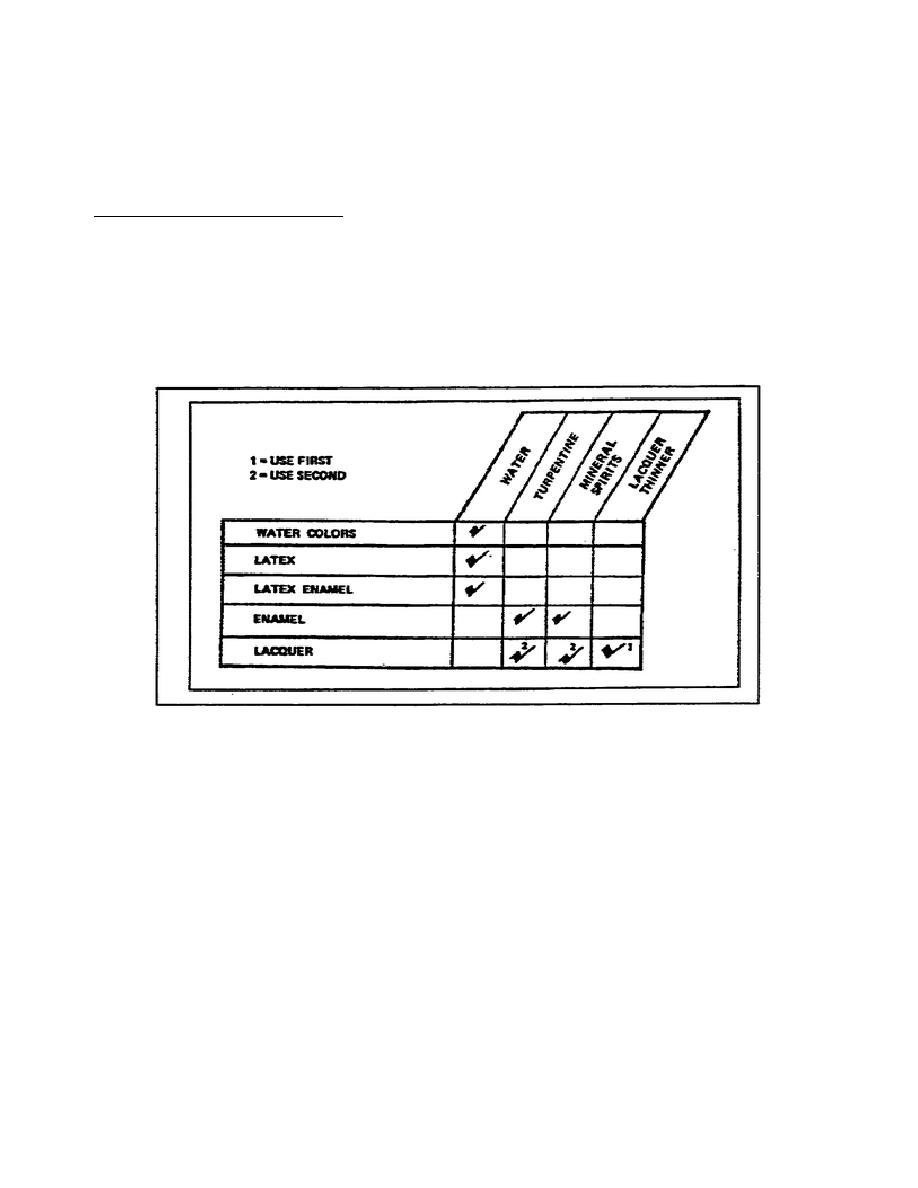
fact, these brushes are made from just about every other animal but the
camel.
Of this type, the best is made from the hair of the common
squirrel tail.
b. A low quality red sable brush is preferable to the best "camel's
hair" brush.
10. Caring for Your Brushes.
For lettering brushes to perform properly and have a long life, you must
clean and store them properly.
All paints are not compatible with all
thinners. Therefore, when you clean lettering brushes, ensure the thinner
is compatible with the paint.
Figure 2-10 provides a cross-reference
between paints and thinners. If you use an incorrect thinner to clean the
brush, you could ruin the lettering brush.
Figure 2-10.
Paint/thinner compatibility chart
a. Proper cleaning and storage of lettering brushes prolongs their
life. After you have cleaned the lettering brushes used in oil paints or
lacquers, fill them with linseed oil, shape the hairs, and place them on
their sides. Never rest brushes on their hairs.
b. An expedient way of storing a brush is to fill the hairs with motor
oil.
The oil prevents any remaining paint from hardening.
Hardening
causes brushes to become useless. You must clean the brush and change the
oil after a month of nonuse.
c. A paint brush conditioner helps keep the larger brushes soft and
pliable.
2-11
SS0525



 Previous Page
Previous Page
